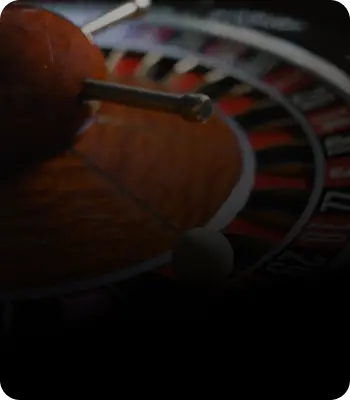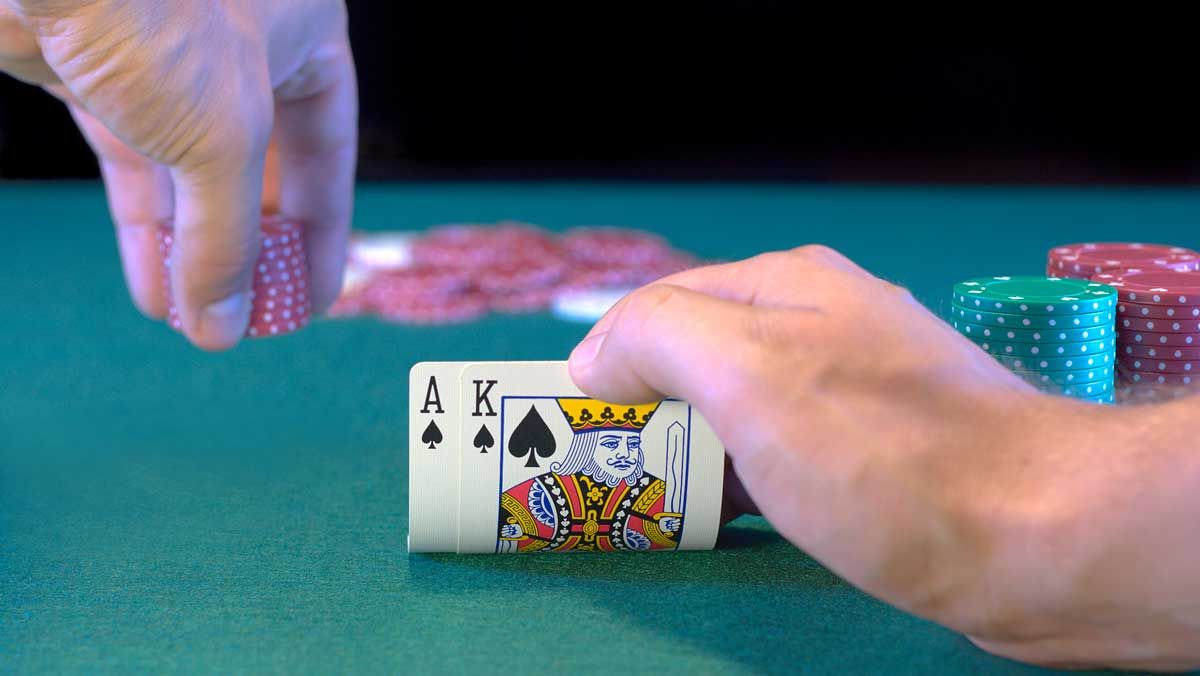
Continuation bet in poker, also sometimes known as c-bet, is a popular move that’s employed by almost all players due to its effectiveness. In fact, if you don’t learn to use it, you might be putting yourself at a great disadvantage.
But what exactly is a c-bet? To put it simply, a c-bet in poker is a bet that’s made on the flop whenever you are the pre-flop raiser.
How to Use A Continuation Bet
Continuation Bet Size
A good continuation bet should be around ⅔ to ¾ the size of the pot. So, if the pot were $10, then a good continuation bet would be $7. You don’t want it to be too low. Otherwise, your opponents might call, especially if they have good pot odds or if they have a slightly decent hand that’s worth risking.
You want to create an image where it seems that you have a very strong hand, like maybe a top pair or better. The goal, after all, is to scare your opponents into folding. If you overbet the pot, say with $15 instead of $7, not only are you investing too much money into the hand but you are also taking an unnecessary risk when you could have achieved the same result with just $7.

Read Your Opponents
As with all cases, you should always get a reading of your opponent’s strength before making your move. At lower stakes, you will find yourself facing opponents who are more likely to call, no matter what cards they have. And if so, it won’t be profitable to make continuation bets, since these are the opponents who will keep playing even if they only hold mediocre hands.
If you are facing a good opponent, more often than not, they would be able to sense these types of plays and may raise or call knowing that you are betting with a terrible hand. Therefore, against good players, you will want to reduce the number of continuation bets.
Look at the Flop
As we pointed out earlier, a continuation bet refers to bets that are made whenever you are the preflop aggressor. Naturally, the success of a c-bet also depends on what cards the flop brings.
Let’s look at some examples.
Let’s say you had A♣️-Q♦️, and out came a rainbow flop of 2-6-K. Here, it would be difficult for your opponent to call unless they were holding at least a pair of aces. Even if they had a pair of twos or sixes, there was a high chance for them to fold because of your continuation bet. Why? If you made a continuation bet here, you would basically be saying, “I have a higher pair than six.” If they were to bet here, however, you would have to be careful, as they might be holding a pocket pair or trips.
Let’s look at another flop example. What happens if the flop was a 7♠️-8♥️-10h♥️?
Here, your continuation bet might be called because of the possibilities of the flush draw and straight draw. Your opponent might call just to take a chance on hitting a straight or a flush here.
So, as you can see, this strategy highly depends on the outcome of the flop and your board reading skills. Before you can use this strategy, always consider the texture of the flop and the likelihood that your opponent might have made a hand.
Factors That Influence Your Decision to C-Bet
Before you start firing c-bets, you should also learn about the factors that may influence your c-bet strategy.
Number Of Players In The Pot
This c-bet play has a higher chance of being successful when you are faced with only one opponent instead of two or more. This is simply due to the fact that the more opponents you have, the higher chances for one, or more, of them to have a good hand.
Therefore, we recommend you restrict the use of c-bets to when you are up against a single opponent even if it is technically possible to use it successfully against multiple opponents. You want to lower the chances of being called, which, in the long run, will help in protecting your table image.
Your Position
Before you decide whether to c-bet, make sure that you pay attention to your position. Are you the Big Blind or Under-The-Gun? Positions are important, and they always affect your strength at the table.
If you are in an early position, you may accidentally give some clues about your hand away. If you are the last to act, you will have the opportunity to see your opponent’s action first, thus giving you more knowledge about your opponent’s potential range. And this will help you decide whether to c-bet and how much you should bet.
The Problem With Continuation Bet
While c-bet is a necessary string to any winning player’s bow, it has also undeniably become extremely predictable. And in poker, you should never become predictable.
It’s important to keep things varied so that our opponents never know what we’ll do next. This way, it becomes harder for anyone to exploit us. This is where the delayed continuation bet comes in.
Delayed Continuation Bet
 The trick to be better at using continuation bets is to mix in some delayed continuation bets. As the name implies, this is a c-bet that is made later in the hand. On the turn, to be precise.
The trick to be better at using continuation bets is to mix in some delayed continuation bets. As the name implies, this is a c-bet that is made later in the hand. On the turn, to be precise.
It’s pretty much a given in modern poker that players will check to the initial aggressor. So, if you raise preflop, you’re either going to be the first to act, in which case a c-bet is expected, or your opponent will check to you while expecting the same. Don’t give them what they want all the time. Check, take a free turn card, and then fire on the next street.
Benefits Of A Delayed Continuation Bet
Aside from staying unpredictable, there are two other big reasons why delaying a c-bet is beneficial. Let’s discuss these.
First of all, delaying your c-bets from time to time means that your bluffs are more likely to get through. Think about it. A preflop caller who also calls on a flop bet tends to have a much stronger range. They are telling you a lot about their hand.
But if you check through to the turn, ranges simply have to be broader and weaker. If you have the positional advantage, your opponent will have checked twice to you already. Against such a range, it’s much easier to force a bluff through.
Secondly, your perceived checking range is stronger when you mix in some checks on the flop with decent hands. Let’s say that you went heads-up and won, your opponent would remember that you checked back the flop, and they wouldn’t forget this in a hurry. They would think twice before making an attempt to exploit you after this.
When To Delay Your Continuation Bets
Now that you understand why you should sometimes delay your continuation bets, let’s talk about the right time to mix this poker strategy into your game. Let’s look at some common scenarios.
Average Hands On Action Flops
As we’ve established, c-betting too often is exploitable by increased check-raising. So, try doing it only when you have the best hands in your range, or the worst.
If you were c-bet bluffing with a trash hand, then you should have prepared to fold. You want to do this occasionally to protect your hand image and to stop your opponent from getting a read on your strategy.
Big Hands With Blockers
Let’s say you held a genuinely premium hand, such as Q-Q. You raised and found a preflop call. A rainbow flop of Q-7-2 followed. This is a pretty dry board where your opponent is unlikely to have a piece, and the kind of holding you want them to have here is something like A-Q. But that’s extremely unlikely in this hypothetical situation since you were holding two Queens.
In this spot, it makes sense to give a free card and let your opponent catch up. Even if they don’t, they might try bluffing the turn. Either way, it’s good for you to delay betting on this type of flop.
Made Hands That Aren’t Overly Strong
Any hand that isn’t good enough to value bet on all three streets is also a suitable contender for a delayed c-bet. Imagine flopping the top pair with a weak kicker, such as A♣️-3♣️ on a board of A♦️-9♠️-2♥️.
You’re likely ahead, but are you happy betting all three streets, knowing you might be against a better top pair? You’re not likely to be outdrawn, but similarly, your opponent isn’t going away if they have an A-T type hand. By delaying your c-bet, you are putting less money into the pot, thus protecting yourself against such a situation.
Conclusion
Continuation bet and delayed continuation bet are commonplace in Texas Hold’em games, so it’s in your best interest to learn and incorporate them into your gameplay. While they may seem easy to understand theoretically, to be good at firing them is another matter. It takes time and experience to learn how to use them at the right time.
Don’t forget to subscribe to our newsletter to get the latest poker tips as well as info on the upcoming poker events.































